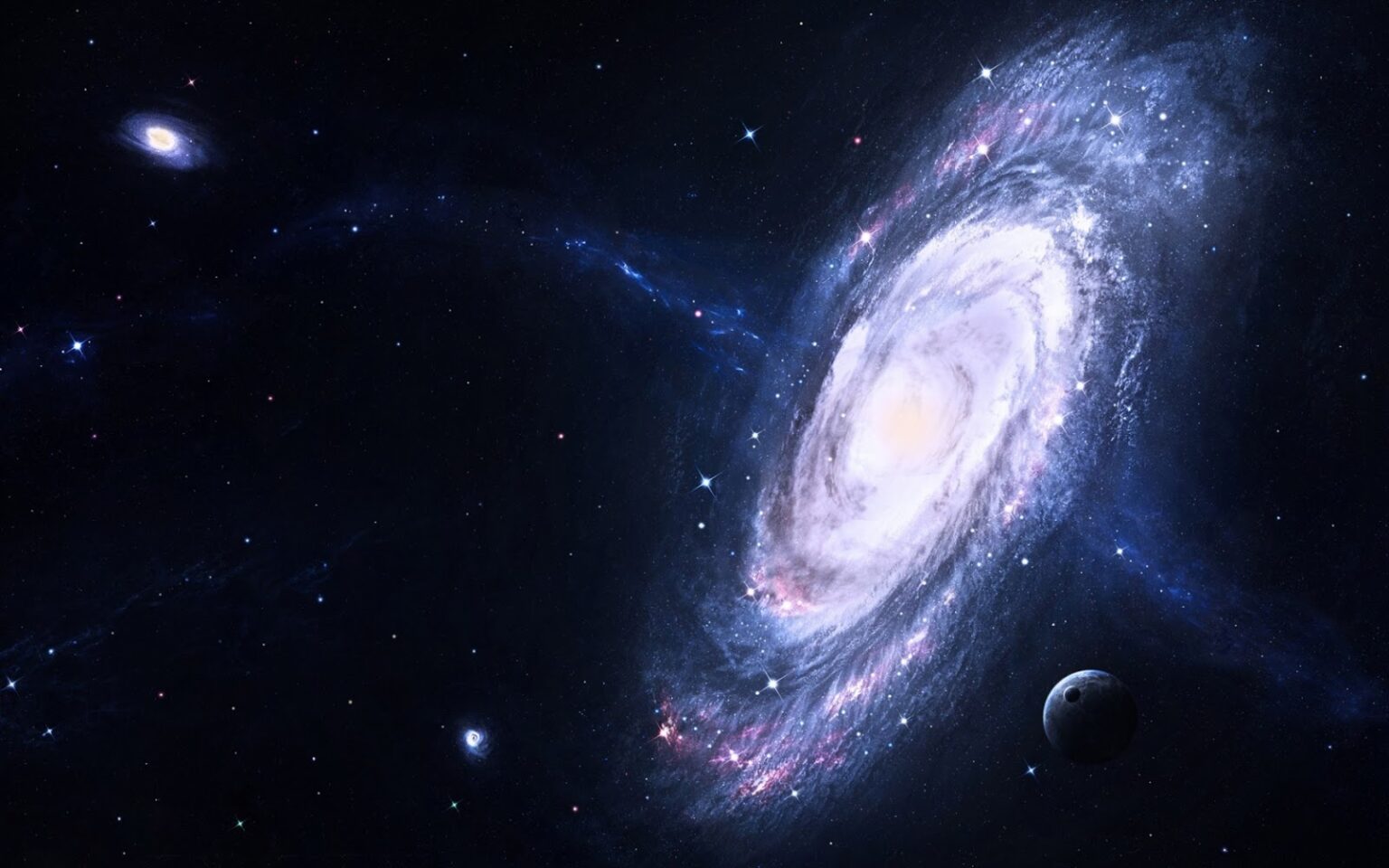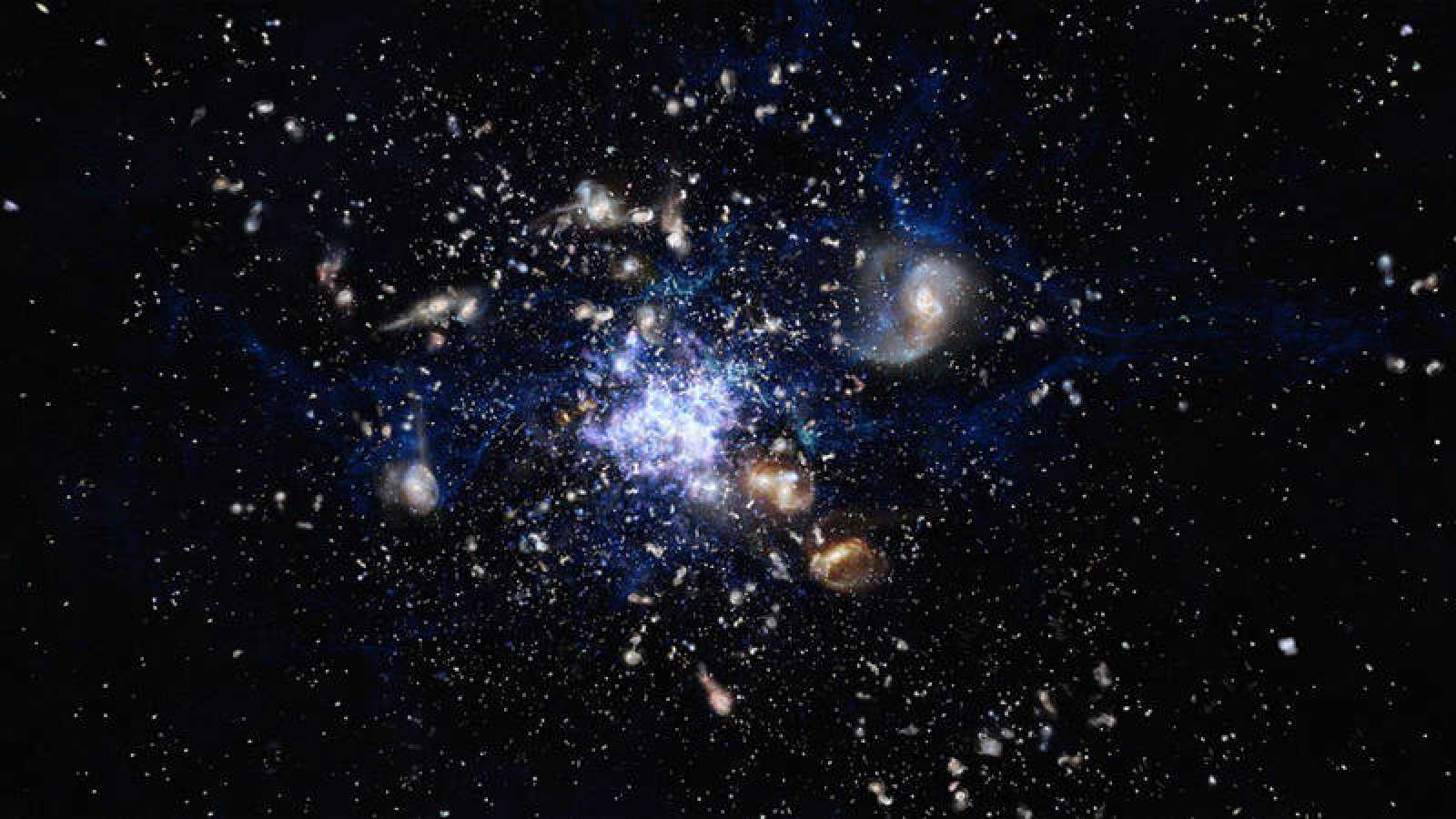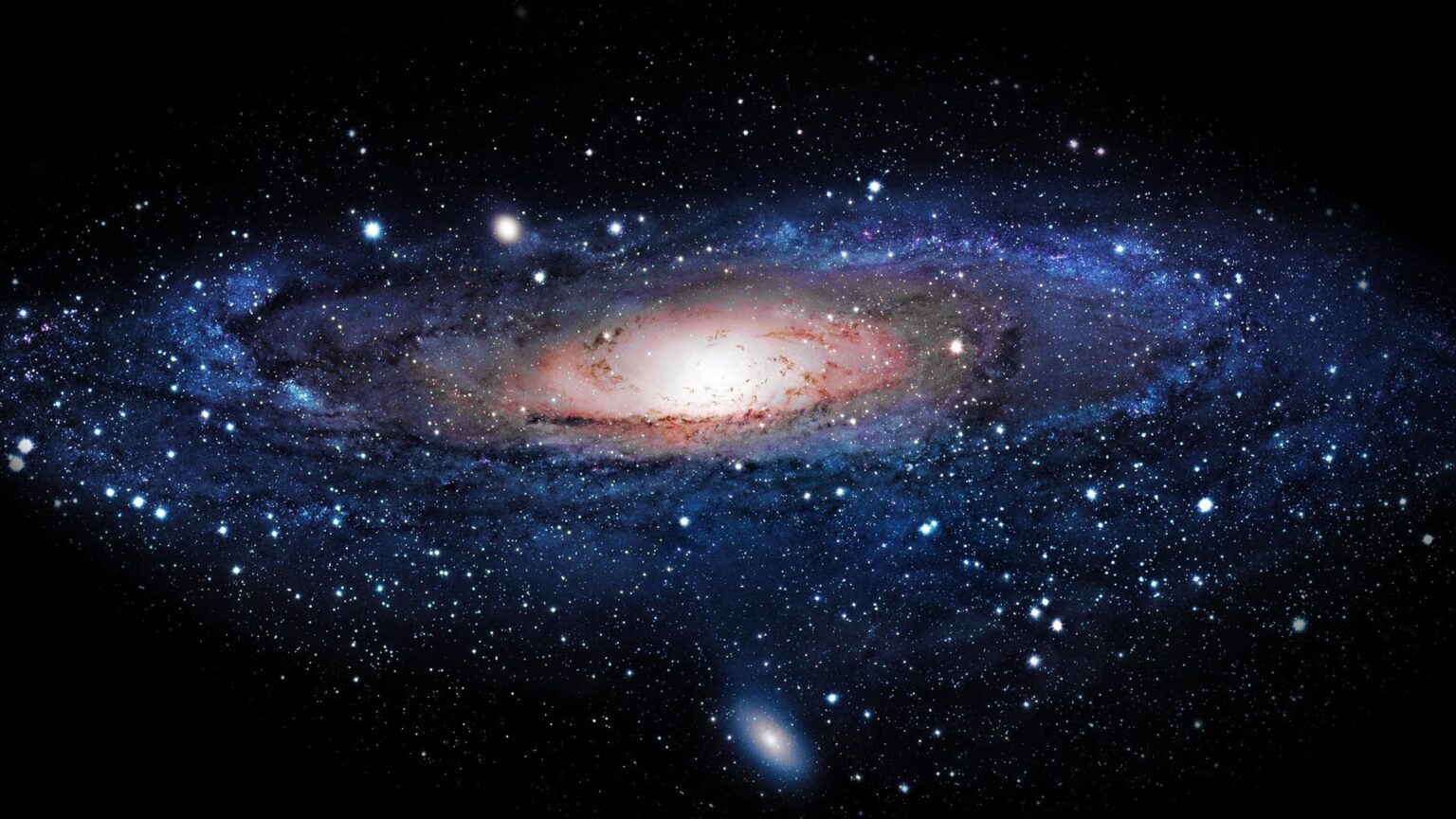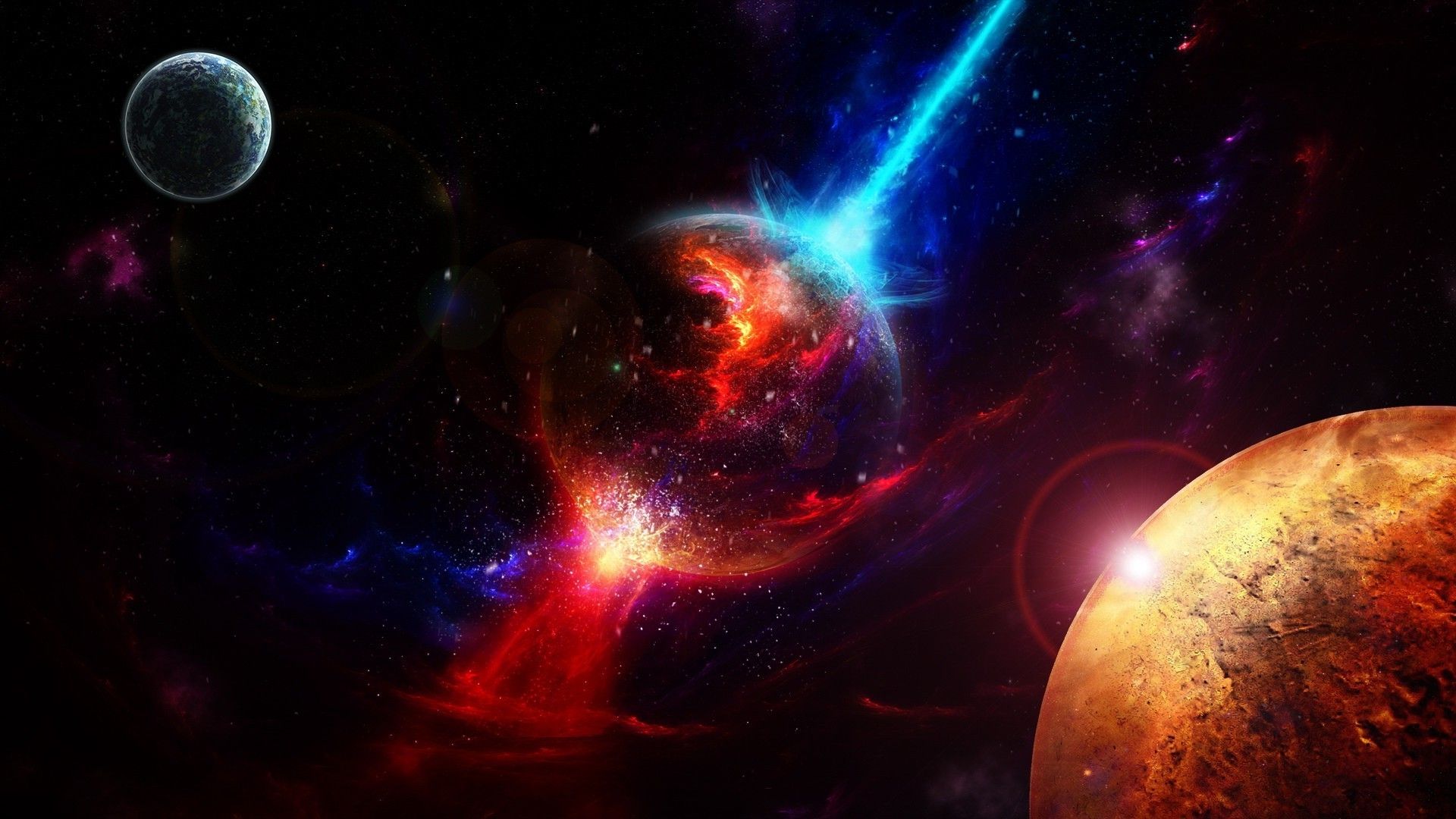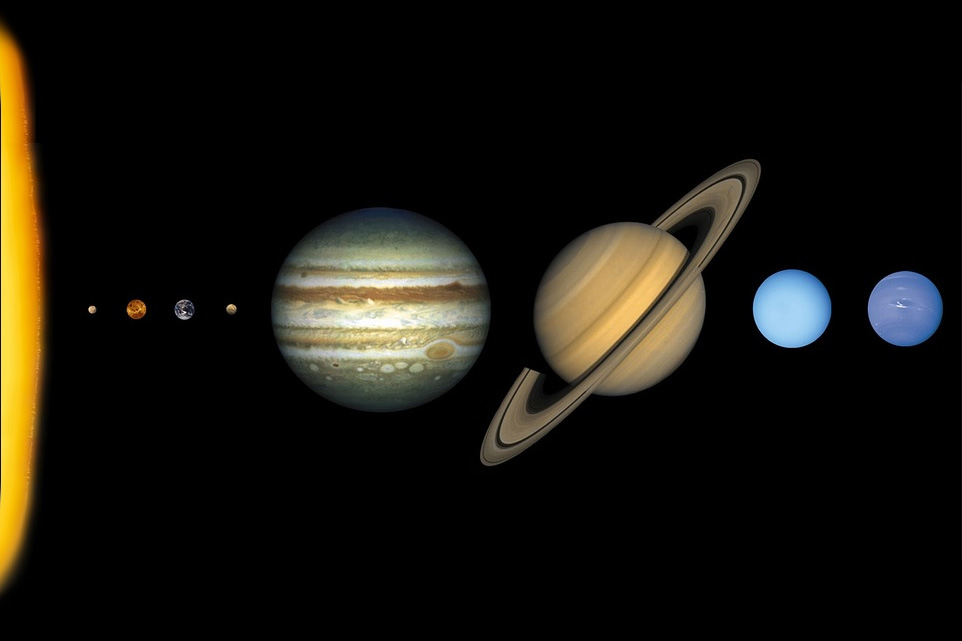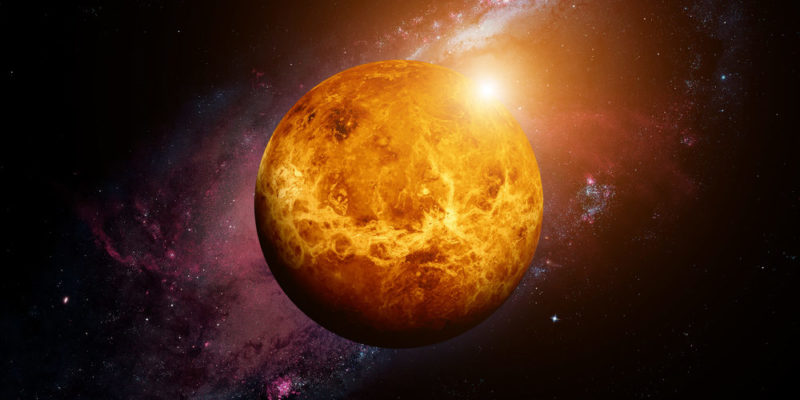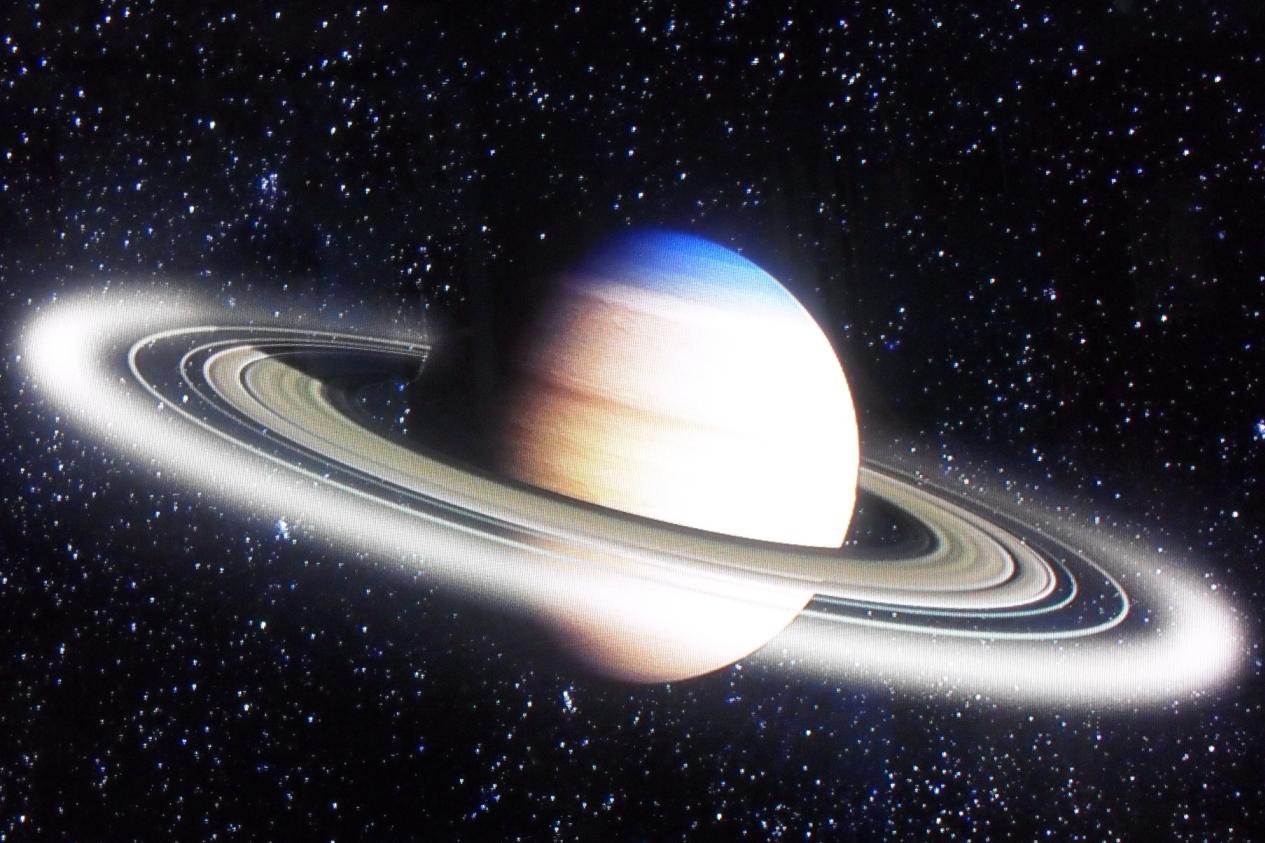The astronomy It is a very interesting branch of science, in charge of studying and seeing everything related to the universe. In this article, everything you need to know about this spectacular part of science is shown, ¿What is it?, features and more. You will also discover with us, the scientific achievements that this branch has contributed through science.

What is Astronomy?
Astronomy is considered a science, which is responsible for the study, knowledge, research, observation and analysis of any type of celestial bodies located in space, through which numerous investigations have been carried out into outer space that makes up the planet Earth. Astronomy itself offers us great advances as a science that have allowed us to know everything from the life of a star to the specific characteristics of a galaxy.
emergence
The emergence of astronomy is not recorded or recorded on a specific date. We can only object that the development and unfolding of this, was implemented according to the questions that humanity raised regarding the characteristics of a firmament that we wonderfully observe from earth.
While man did not find any answer to the spectacle that is presented before his eyes, little by little they were developing and developing different implementation techniques that allowed man to obtain answers about his questions about what was beyond the earth.
During the passing of the centuries and the evolution of time, man has been instructed, and has tried to generate through various means, different results of knowledge, which have allowed him to find answers to the incognito of an unknown space.
It has been tried to study at all costs, more and more, different areas that make up the galaxies, the creation of the solar system, as well as trying to explain the creation and explosion of a supernova, which resulted in thousands of studies carried out with the passing of the centuries.
Years of studies have taken the basis of the understanding that was revealed to man through the knowledge that the investigations carried out have provided him, coming to reflect new discoveries that are more amazing every day about the approximations that we have today of the universe. .
From this, it is said that astronomy has been a science that has accompanied humanity since ancient times, taking into account that thousands of generations have participated in the extraordinary that astronomy offers in many areas of its scientific contributions.
Some of the characters who have contributed through their studies, with astronomical science are:
- Galileo Galilei
- Nicolaus Copernicus
- Claudius Ptolemy
- Johannes Kepler
- Albert Einstein
- Isaac Newton
- Lace
These are some of the scientists who through various centuries of antiquity managed to make various contributions of great help to the fundamental study of basic astronomy and the celestial bodies that are in another parallel world like the one that represents the universe and its immensity.
Thanks to them, astronomy has managed to obtain innumerable advances at a scientific level, which has had an impact on the knowledge and development of the human being. Therefore, today they have been considered, Important scientists in the history. Leaving a great legacy thanks to the studies carried out by the aforementioned scientists.
Main features of astronomy
Its main characteristic is based on the detailed study of various aspects that are located in the universe, among them we find the study of:
- the stars and constellations
- Black holes present in space
- Galaxies
- The milky way, among other celestial bodies that humanity decides to study for the knowledge of a specific topic.
Astronomy bases and shares its study with some areas of science that complement it in a very broad sense, among them we find:
- nuclear physics
- planetary physics
- Geology
- electronic physics
- And astronaut physics.
Astronomy in turn represents a very dynamic science, which is often in search of answers that encourage it to carry out very specific studies on various aspects of the phenomena to be studied.
Branches into which astronomy is divided
Thanks to the wide variety of objects that are at the mercy of studying, astronomy is divided into various study areas, in which each area fulfills a specific function, since it is intended to reach concrete answers. These branches are divided into the following:
Astrophysics
This branch of astronomy focuses its efforts on recognizing the position, progress and distribution of the stars. Study that begins with a boom very recently in human history, in the nineteenth century to be exact. Time in which humanity realizes that the stars cannot last forever.
Time in which deep studies are carried out that allow knowledge about the chemical composition of stars. It becomes known that stars burn hydrogen to constantly produce energy to space.
There were some interesting attempts in the XNUMXth century to explain the emission of solar energy.
Scientists showed that if the sun were made of pure anthracite coal, (the best known fuel at the time) it could last only 10.000 years at its current energy emission rate. Thanks to the study of astrophysics, it is known that the life of a star is a battle between nuclear fires and gravity.
Thanks to nuclear physics, today we can know that the energy source of the stars is nuclear fusion, in the depths of the sun, the hydrogen nuclei come together in a series of reactions whose final product is helium and an excess of energy . Most stars generate energy in the same way for most of their lives.
Cosmology
It is considered one of the branches of astronomy, whose study is mainly based on the progress, characteristics and evolution of the universe and everything that inhabits it. Thanks to cosmology and studies about the evolution or origin of the universe, the big bang theory emerges, which tries to explain the expansion of the universe and its scientific origin.
Very determined and meticulous studies revealed to humanity some of the most outstanding characteristics of the universe, among them that the universe is made specifically of dark matter, over the years, 90% of astronomers have confirmed that the matter in the universe, it is in a form that cannot be seen.
celestial mechanics
His study is based on studies ranging from somewhat complex reasoning. This branch of astronomy has focused all its efforts on knowing and highlighting the rotation of the moon around the contour of the earth, as well as carrying out numerous studies that go hand in hand with the behavior of other planets.
astronomy in position
It is considered the most archaic branch present in astronomical science, it bases its studies on the perspective and position of the stars, even implementing measurements under the plane approach. At the same time it is the branch that studies some phenomena such as eclipses among other things.
Some fields of astronomy studies
Astronomy is divided into some fields of study, through which research is carried out which is based on a specific area. Among these fields of study we find the following:
astrometry
Through this field of study, investigations are carried out that cover the position of bodies in the sky, this by defining the coordinate system, using the acceleration or movement of objects in the milky way.
Astrophysics
Its field of study focuses on all theories based on the universe, which translates into its own characteristics, such as density, structure, formation, evolution, chemical composition and formation.
Planetary science
It carries out the investigation of everything concerning the planets. Just as he managed to decipher How did the solar system form.
Astrobiology
It means the study of the evolution and appearance of organisms that make life in the universe.
Cosmology
It is based on the study of the structure of the universe, its origin, evolution and more. Another well-known field of study is the formation, evolution and characteristics of galaxies.
The formation and evolution of galaxies is another field of study that astronomy has. For its part, the existence of galaxies was not confirmed until the twenties, it became known through studies, that most galaxies have a spiral shape like the Milky Way, spiral galaxies are flat, and they have two or four spirally curved arms.
There are other types of galaxies that are not spiral, most of these are represented by elliptical galaxies, as the name says, they are large accumulations of stars in an elliptical shape which do not have another molecular structure. This type of detailed study is also called galactic astronomy.
stellar evolution
Stellar evolution is specifically based on the study of the evolution of stars, coming to interpret their duration through the revelation of the life history of a star, until its fall or destruction.
It is responsible for the extensive study of substances, bodies or objects that are outside the Milky Way.
stellar astronomy
It focuses its scientific objective on the study of the stars and everything related to chemical composition, birth, life, and expiration.
star formation
Study that carries out the information and development of the environment and surroundings, as well as the processes that carry out the formation of stars.
Differences between astronomy and astrology
Astronomy and astrology are two terms that at a grammatical level can be somewhat similar in terms of the way of expressing the terms. However, astrology and astronomy should not be confused under any circumstances.
Both are distinguished thanks to their concepts, levels, and fields of study. For its part, astronomy is the science that aims to interpret the stars, through which they presumably have a close relationship and bond with human beings.
Astronomy focuses its efforts on linking the planets and stars with the inner being of men, today having great scope, astrology grants a great superimposed structure that encompasses everything related to astrological charts, the tarot, the horoscope, and more. Through which an attempt is made to explain and classify some human behaviors around the signs of the zodiac.
The scope that this has had in the history of science, are truly concrete. Thanks to the studies that have been carried out, astrology has led in a very satisfactory way the results obtained, to intertwine planetary science with the spiritual and soul forms that men possess.
Astrology finally arriving to obtain punctual results about the influence of some planets in the signs of the zodiac. While astronomy focuses its study on purely scientific facts, which seek to resolve and clarify doubts about some questions that man has raised throughout history.
Therefore, one term should not be confused with another. Since clearly both have very different fixed objectives in terms of the structure of the studies carried out regarding the planets, the universe, and outer space.
Scientific contributions of astronomy
Below are some of the achievements and contributions that astronomy has made over the centuries and years, thanks to the scientific advances that have been developed and the contributions of science.
Thanks to astronomy, studies have been carried out that develop diverse knowledge to the human mind, among them we find:
The study about the way a star dies
Thanks to the different exposures offered by the field of study of extragalactic astronomy, today we know the way in which a star dies, the investigations carried out show that this depends on its mass.
The only thing that matters in determining what the last stages of a star's life will be is how big it is. Large stars die as supernovae. When a large star finishes burning its hydrogen and helium, it continues to contract and becomes much hotter.
The temperature depletes helium, then carbon, then silicon, and finally produces iron. Iron constitutes the last nuclear ashes. You can't get energy from iron by allowing it to fuse with others. Simply the star will not burn, in a very large star the iron ashes begin to clog the core.
When nuclear reactions stop inside a large star, the core collapses under the influence of gravity. The outer parts of the star see the rug pulled from under their feet and begin to fall inward. Along the way they find the core, which is bouncing and unleashed to hell. The result is an explosion in which the star literally shatters as it pours energy into space. For a short time, supernovae can emit more energy than an entire galaxy.
Supernova 1987A was the most recent supernova present in our immediate vicinity. Supernovae are not rare, there are several in a century in most galaxies, in February 1987 a supernova exploded in the Magellanic cloud, near the Milky Way. This was the first supernova close enough to be observed with all the techniques of modern astronomy.
The great news about 1987 is that there was no news. It behaved more or less as the theories predicted. This was a great triumph for modern astrophysics since the event developed exactly the behavior that scientists had carefully studied, and the results were spot on.
a nova
As opposed to a supernova it refers to any star that suddenly appears to brighten in the sky. What we now call a nova is in fact a double star system in which one of the members is a white dwarf. The mass of the larger star falls on the surface of the white dwarf until one accumulates at a depth of just over half a meter.
Then due to the tremendous pressure and heat, the extra mass ignites in a nuclear fire and is consumed. This ignition is observed as an increase in brightness of the star in the sky. So the same nova can go off and on again several times, and the typical time between successive brightnesses is about 10.000 years.
black hole theory
A black hole is a possible end of a supernova, if the core mass of the supernova collapses and is large enough, gravity can force the neutrons to come together and the star evolves into a black hole, in this state not even light can escape from its surface. The black hole represents the ultimate triumph of the force of gravity over the matter of the star.
galaxy studies
When we look at the sky we see stars grouped in large collections called galaxies. Ours is an ordinary galaxy, it has about 10.000 million stars, and its most obvious feature is that the bright stars are in the arms of the spiral. Viewed from a distance, our galaxy would look like a flat cake, a disk about 80.000 light-years across with four spiral arms sprouting from the disk.
At the center is a large spherical concentration of stars called the core, our sun located about two-thirds of the way out in one of those spiral arms.
The stars in the central core of the galaxy are highly condensed. Near the sun the stars are located many light years apart from each other. In the center of the galaxy, the distance between the stars is much smaller, perhaps a few times the size of the solar system. Therefore, if we were on a planet in orbit around one of those stars, there would be no night.
Even if our side of the planet was facing away from our particular sun, there would be enough light from the other stars in the immediate vicinity to keep it daytime. The existence of other galaxies as we have mentioned before originated not long ago. Galaxies represent an important part of our image of the universe, so there is a huge debate in the scientific world about the true existence of other galaxies.
The argument is based on whether the cloudy patches of light in the sky were other island universes, such as the Milky Way, or simply clouds of gas. The matter is resolved thanks to the American astronomer Edwin Hubble.
Who owned a 2,58 meter telescope on Mount Wilson in California. With this telescope he was able to observe individual stars in the Andromeda galaxy, our closest neighbor, and was able to show that it was more than 2 million light years away.
Thanks to astronomy it is known that galaxies were formed by condensation of gas clouds, through a process similar to that which formed the sun and the solar system, in a large gas cloud, there are always some areas where more mass is grouped than in others. These high-density areas attracted nearby matter to them, making them even more massive and therefore capable of attracting more matter.
Ultimately, this process must have caused a large cloud to break up into separate galaxies, and within each galaxy the process must have continued to act to form separate stars.
existence of radio galaxies
Astronomy has also taken on the task of discovering and studying the existence of radio galaxies, these are defined as places of galactic violence. Radio galaxies like the Milky Way tend to emit most of their radiation in the form of visible light, much like the sun does. There are, however, a number of galaxies that emit very strong radio signals. Those galaxies are known as radio galaxies.
When you look at radio galaxies with normal telescopes, you tend to see galaxies in which there is a lot of jittering, banging, and other types of behavior that we don't associate with relatively quiet places like the Milky Way, so there seems to be Two types of galaxies in the universe: violent galaxies like radio galaxies, and quiet, homely cozy places like the milky way.
Discovery of the Solar System thanks to astronomy
Centuries of observation and decades of work with space probes have produced a wealth of information about our own planetary system. After a few remarks about the general structure of the system itself. The study and scientific dissemination of the solar system is one of the most prominent achievements that astronomy has reached in terms of deepening its study. Thanks to this, man has managed to know the characteristics that define the Solar System and the planets that compose it.
Astronomy indicates that the planets formed at the same time as the Sun and are made of the same matter. According to experts, about 4.600 billion years ago, the sun and the planets formed an interstellar dust cloud. Ninety-nine percent of the mass of the interstellar cloud went to the Sun. The rotation of the dust cloud from which the Solar System formed forced all matter that did not go to the Sun into a flat disk called elliptical. The planets and the rest of the system formed in this plane.
This explains why all the planets except Pluto have orbits in the same plane, and they all move in the same direction. The attraction and gravitation broke the elliptical disk into individual planets. Masses of matter in the disk attracted matter from its surroundings, and as a consequence, became more massive. Finally those accumulated masses formed the planets.
The largest planets in the solar system are the least Earth-like. When the Solar System was forming, there was a crucial difference in temperature between the inner and outer parts of the system. Astronomical studies have interpreted that near the Sun where the temperature was higher, a number of elements such as methane and ammonia were in the form of vapor, while further out they remained in the form of ice.
When the Sun's nuclear fires were ignited, the radiation blew the volatile matter away from the inner part of the Solar System, while further out that matter, along with hydrogen and helium, tended to remain incorporated into the planets. Thus, planets close to the sun tend to be small and rocky, while those far away tend to be large and gaseous.
Scientific advances in astronomy have detailed each of the characteristics that the planets of the solar system present, as well as making a classification that divides them into rocky inner planets, such as Mercury, Venus, Earth and Mars, they are called terrestrial planets, and our moon is included in this category, although it is not itself a planet.
https://www.youtube.com/watch?v=T-UyRQaeVH4
The outer planets like Jupiter, Saturn, Uranus, and Neptune are called gas giants, or also called Jovian planets. These planets may have a small rocky core, something much larger than a terrestrial planet. But they are surrounded by deep layers of liquids and gases.
The studies that astronomical science has outlined have concluded that the earth is the only planet in the Solar System that has tectonic activity, the only planet that has liquid water on its surface, and the only planet that contains life.
The Moon is the only body in the Solar System whose features we can detect with the naked eye, it has highlands that form rings of craters. However, it is not yet known when exactly the Moon was formed, it is said that it must have formed at the same time that the earth was formed.
Mercury
El Planet Mercury it is the closest planet to the Sun. It completes the trip around its orbit every eighty-eight days. The planet is visible from Earth as a morning and evening star. Mercury has no atmosphere, its surface is dotted with craters and it looks very similar to our Moon, the planet has an interior somewhat similar to that of the earth, with a metallic core surrounded by a layer of silicon-based minerals.
Venus
It is the planet most similar to the earth, the temperature of its surface is high, around 470 degrees Celsius, it is believed that the reason for these high temperatures is the greenhouse effect caused by the large amounts of water vapor and carbon dioxide. carbon in the Venusian atmosphere.
Mars
It is the furthest from the terrestrial planets, it has only half the size of the earth. Its year corresponds to two Earth years, and it can be said that it has seasons because we can observe how the polar caps form and fade.
There is no evidence of life on Mars or any other body in the Solar System, on Venus, the moon and on Mars there is no evidence of life. This would have been a complete surprise to scientists in the XNUMXs, when it was felt that some planets harbored life.
Jupiter is the largest planet in the Solar System, it rotates on itself rapidly, its day has a duration of six hours. Due to its rotation, Jupiter's atmosphere is divided into bands of different colors. The planet has many moons, which revolve around it much like the planets revolve around the Sun.
Many of Jupiter's Moons are quite large and resemble the terrestrial planets in composition. This planet was about to be a star, the mass of Jupiter is only eight times less than that necessary to raise its internal temperature, to the point where its fusion reaction begins.
Saturn
With its rings it represents the most spectacular of the planets, it is a gas giant like Jupiter and it is also the last of the planets that can be seen from Earth with the naked eye. has twenty one Natural satellites, one of them is called titan and it is the largest moon in the solar system.
It is the only satellite that has an atmosphere consisting of nitrogen, methane and argon, the surface temperature of titan oscillates around 280 degrees Celsius. This combination makes titan somewhat similar to earth.
Saturn's rings probably attract more attention than anything else about the planet. These rings are made up of narrow bands of debris, most of it in the form of rocks and ice. The rings are very thin, some astronomers believe that although they reflect light a lot, they may be more than a few hundred meters thick.
Uranus
It has five Moons and a series of very narrow, dark rings around it, somewhat similar to the rings of Saturn. These rings were discovered in 1977, when the planet passed in front of a star and the dimming of light due to absorption by the rings was detected.
Uranus spins sideways. Most of the planets in the Solar System rotate around their axis, so that after a day, both sides are exposed to the Sun. Unlike them, Uranus is turned on its side, so its axis of rotation it is in the same plane as its orbit, so the south pole receives light for half the year, and the north pole receives light for the other half.
Neptuno
It has eight Moons, as well as its own set of rings. The winds on its surface are the fastest in the Solar System, calculated at more than 2.500 kilometers per hour. Neptune was the first planet discovered as a result of a prediction.
Observing deviations in Uranus's orbit from its predicted course, 1845th-century astronomers calculated where a planet had to be to cause these deviations. They directed their telescopes to that point, and discovered the planet on the twenty-third day of September in the year XNUMX.
Pluto
It is in many ways the strangest of the planets. It is small, and it has a large Moon called Charon, its orbit is eccentric, which can cause it to have seasons, in the sense that when it is closer to the sun, the liquid methane on its surface boils to form a kind of atmospheric mist , when the planet moves away from the sun again, it begins to snow solid methane. These have finally been just some of the scientific advances that astronomy studies have revealed about the structure of the universe and the celestial bodies that accompany it.
Influence of astronomy on technological development
Astronomy is developed through objectives that increasingly try to generate and innovate in various knowledge that focus their efforts on understanding the superstructure of everything that encompasses the universe. Fact that has allowed humanity in general to obtain benefits of various types that add and increase knowledge based on science.
Astronomy, in turn, has opened a path, through the studies carried out by science, to technological development, since only through this resource in the investigations that have been carried out, technology plays a fundamental role. The arrival of man on the moon is the greatest result of the great innovation that the human being has implemented to carry out this mission, with the main objective of increasing knowledge.
Thanks to the new scientific advances, astronomy goes hand in hand with the implementation of technological development, through which the scope of knowledge is one step away from immediacy. With technological instruments such as satellites, telescopes, rockets, among other technological artifacts, they allow the detailed study of the fields of study that astronomy implements today.
Some curious data that astronomy has contributed through science
- The famous German philosopher Immanuel Kant was the first to speculate that other galaxies might exist in the universe. He was also the first to use the word island universes to refer to them.
- Large stars live fast and form spectacular corpses.
- The brightness of a star is measured in terms of its magnitude.
- Jupiter was about to become a star, thanks to the mass it reached. In this case, it was very unlikely that life on earth would have developed, since the extra radiation, even from such a small star, would have upset the delicate balance that makes life possible on our planet.
These are some of the curious data that over time, according to the studies that astronomy has provided, today we have the joy of knowing. Getting to get much more information than we had expected.
